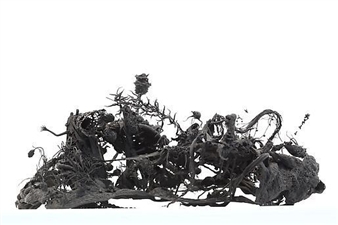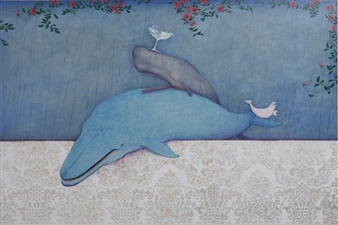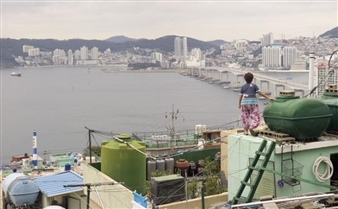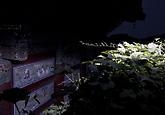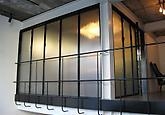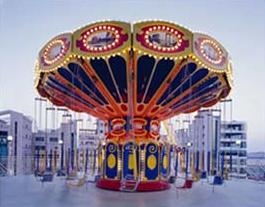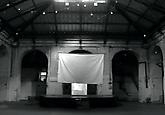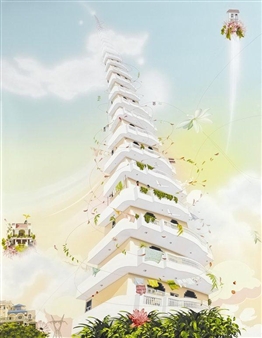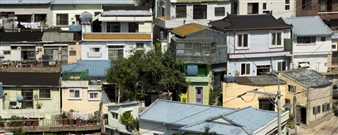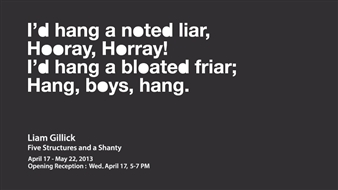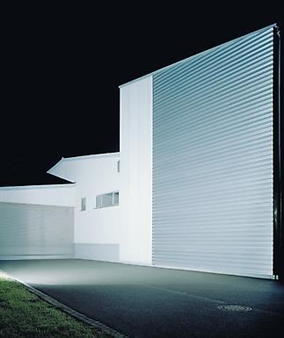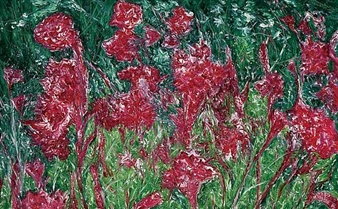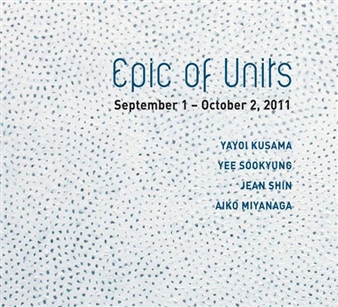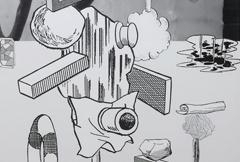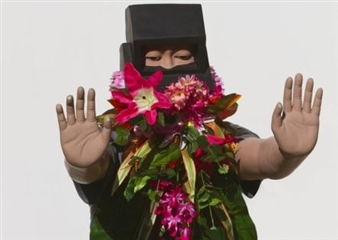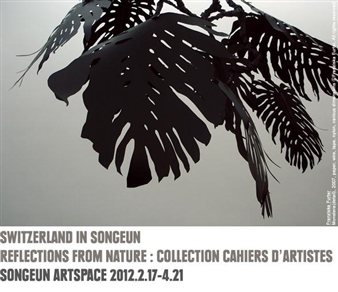From Moment To Eternity
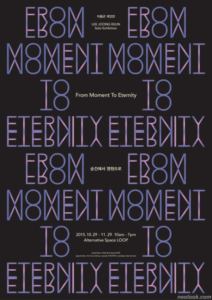
ALTERNATIVE SPACE LOOP, Seoul-t'ukpyolsi, Seoul, 10/29/2015 - 11/29/2015
335-11 Seokyo-dong, Mapo-gu
"It was gazing at something far through a telescope, while at the same time inspecting its microcosm through a microscope." - The Artist's Notes ● micro, macro vision, Like the artist's first impression of a kaleidoscope, Lee Joong Keun's art constantly gazes into our enigmatic and complex world. It is because Lee attempts to capture uncanny temporal and spatial experiences full of endlessly connected images, like a kaleidoscope. To this end, the artist engages our world through a special perspective. He deals with society using what is both a telescope and a microscope, i.e., by simultaneously possessing both macroscopic and microscopic perspectives. In Lee's works, not only are such disparate visual approaches realized in single images, Lee's unique formal expressions also provide a quite marvelous visual experience. Additionally, a parallax emerges due to such perspectival intervals, and this is both of Lee's works' animated pleasure dimension and the basic context in which the artist expresses his idiomatic social persuasions. Therefore, Lee's art gives different impressions depending on how one views them- whether one examines them casually or closely- and it appears such visual margins should be regarded as beyond simply fantastic and interesting images. This is because the interstices reflect innermost conditions resembling the world's certain secrets, and trajectories of the artist's profound meditation regarding our era.pattern ● The (digital) pattern images invoked by mention of Lee Joong Keun are not merely repetitions of imagery. Like a kaleidoscopic visual experience, they are a means of expression aimed at viewing the world alternatively, and a formal principle operating as an instrument for exposing our circulating and repeating society of innumerable concatenations. At the same time, they also reveal a situation of continually linked relationships between individual elements. Therefore, these images were Lee's thoroughly profound method of expression, where the artist seeks to view objects in terms of their divergent and ever-changing relational structures. Also, Lee activates a certain kinetic effect based on variables in how his pattern elements are combined, and it appears in Lee's case the patterns' sense of motion as such is intentionally for more than just referencing a certain stable order in our world. It is because, although the sense of rhythm created by a repetition of (ir)regularities offers the viewer a sense of visual stability, infinite repetitions of these patterns actually also expose a kaleidoscopic world full of quantitative reiteration resulting particularly from digital technology's illimitable copying of images- a world surrounded by ceaselessly circulating and repeating images with no discernible genesis or finish. The artist perhaps was ultimately endeavoring to visualize certain repeating and expanding aspects of our world through various compositions of these patterned images. For this reason, Lee's works sometimes expand into various found-object, installation and public art pieces, and even product design through collaborations with corporations, as well as assuming 2D forms. These are all features confirming how Lee's pattern works are directed at society. Additionally, despite being of digital methods, as products of honest, dexterous manual labor as opposed to any program operated through certain algorithms, including in the repetition of images, Lee's works speak to remarkable sensibilities. fractal ● Meanwhile, in how it reveals a certain structural principle of society, Lee's pattern method also coalesces with the logic of fractals. However, the concept of fractals, which create strange and complex structures through endlessly repeating of simple ones, is not directly consistent with all of Lee's works. It is because fractals represent a concept essentially of self-affinities and circuity, in which parts resemble the whole. This is partly because Lee's works utilize digital imaging technologies for their connection to such scientific aspects of fractals, to be sure, but also since multifarious creative variables are involved as elements of art, without mere subordination to a (scientific) regular order. The principle of fractals in the expanded sense interoperates with Lee's works in how it exposes as much as order within the chaos hidden by natural phenomena by encompassing random repetitions of regular and irregular elements, as well as addressing simple repetitions, i.e. in how it reflects a certain feature of our world of chaosmos. Lee Joong Keun uses fractal image patterns through sculptural principles visualizing society's heterogeneously intermeshed relationships, such as those between chaos and order, in addition to referencing their mechanical aspects. He, in a way, attempted to reveal our world structuralized through patterns. However, the artist's interests go further. It is as they are advancing toward certain social simulacra more fundamental and original. The mandala-like forms often found in Lee's works can perhaps be reviewed in this context. mandala ● The mandala is a visual representation of the enlightened state of mind, a painting depicting the universe and truth in concrete form. Therefore, the mandala reflects infinity within a confined image, i.e. a totality representing everything in our world. Just as the artist's usage of patterns and fractal formal expressions was for him a means for exposing a certain essential feature of a world expanded through infinite repetition, mandala-like forms, too can be read as formal attempts directed at a more profound original essence of the world. They are the result of Lee's certain, internal reflections being compounded over the years. Lee Joong Keun's shrine series are of the same context. It is because the sanctuary, an embodiment of heaven on earth, is indeed a visual structure realizing the ideal order and harmony human beings seek to reach, a space of a tireless passion for eternity. Although Lee ties these works together under the category of religious icons, relationships with any specific religious dimension appear absent. Only, it would be more appropriate to view this as the artist's formal attempts naturally arising from a process of expressing his deeper speculations by trying to expose an invisible dimension of our mysterious existence. For this reason, disparate elements are curiously locked together in Lee's works. The artist appears in various secular guises in holy shrines, and skulls grab viewers' attention alongside images of jewels sparkling as if they were eternal. However, Lee Joong Keun seems to have aspired to more than just referencing life's frail transience through such. This is evidenced by how Lee is also headed toward the eternal through these moments of transience. from moment to eternity ● It is likely more than just formal principles or similarities to kaleidoscopes, patterns, fractals and mandala paintings in Lee's works that invoke these concepts. This is because Lee's work is also contextually based on untiring attempts to arrive at a certain originality beyond its visual elaborateness, and a ceaseless approach for visualizing the world through an alterative method. As a result, Lee Joong Keun's art must be read as expressing more than just visual exquisiteness and pleasant formal beauty, because it inspires us to reflect on certain, more original matters as much as it visually delights with firework-like magnificence. Fireworks lighting up the night sky demonstrate extreme visual sublimity in itself, but simultaneously also speak to an emptiness after they are evanescently gone. However, what is fleeting is our current lives, and such are also touching, once again, the world's certain, profoundly original principle within the eternity of the otherworld. That scholars liken fireworks to manifestations of God in scintillations is related to realizations of certain profound principles of the world, which disappear from sight just at its climactic moment of perfection. Lee Joong Keun's art, too heads for such deep realizations. Transcending merely visual special effects, the formal skeletons of Lee's works are being weaved through the artist's ceaseless pursuit of what awaits beyond them. Lee's path toward the source of our existence appears to gain definition by the passing year. This is how Lee Joong Keun sets off for a certain originality of the intangible world, leaving behind a technology-based exterior of tangible, sculptural fanciness. ■ Min Byung Jic
